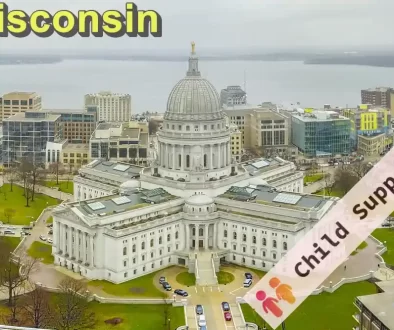Child Support in Minnesota
The parents of a child have an obligation to provide for the child and ensure that the needs of the child are met. Sometimes, both parents may be separated, but these obligations remain. In order to ensure that both parents are responsible for taking care of their child, child support laws have been put in place. Child support refers to periodic payments made to the custodial parent of a child by the noncustodial parent as a contribution to the upbringing of the child.
Child Support Process
The Minnesota Department of Human Services offers child support services to the custodial parent of a minor. Parents who wish to apply for child support services in Minnesota can do so at https://edocs.mn.gov/forms/DHS-1958-ENG. The information required during the application includes the name, phone number, address, employer’s details, etc. of the other (noncustodial) parent. The information provided will help the child support program enforce, collect and pay out child support.
With the details provided, the state tries to locate the other parent so that the case can progress. Locating the noncustodial parent is important because they must first be served a written notice of the child support case before a hearing can commence. Having information like the last known address, social security number, etc., can make this process a lot easier.
When the parent is located, there may be a need to establish the paternity of the child. If the mother was married when the child was conceived or born, then her husband is automatically regarded as the father of the child. However, if the parents are unmarried but agree that the child is theirs, they can sign a Recognition of Parentage form. This is a legal acknowledgment of the parentage of the child. If there is a dispute with regards to the alleged father being the actual father of the child, a genetic test may be requested. For this test, samples are taken from the child, mother, and alleged father for analysis. The tests results can determine if the man is not the father of the child or if there is a greater than 99% probability that the man is the child’s father. The court can then establish the parentage of the child using the results. For more information on establishing paternity of the child, visit https://mn.gov/dhs/people-we-serve/children-and-families/services/child-support/programs-services/genetic-testing-biological-father.jsp.
After paternity has been established, the court can then review available information and establish a child support order.
How Do You Receive Child Support?
Parents receiving child support in Minnesota have two options available to them for obtaining their funds. The first is direct deposit. This is a form of electronic payment that allows the child support funds to be automatically paid into the savings or checking account of the parent. Parents can opt to receive their child support payments as direct deposits by filling the form at https://edocs.dhs.state.mn.us/lfserver/public/DHS-3371-ENG.
Parents can also receive their payments on the U.S. Bank ReliaCard, this is a debit card that has the funds loaded into it when the noncustodial parent pays child support. The ReliaCard can then be used to make purchases at stores that accept card payments or to make cash withdrawals from ATMs. Details of the U.S. Bank ReliaCard can be found at https://edocs.dhs.state.mn.us/lfserver/public/DHS-4533-ENG.
Parents who wish to be exempted from the direct deposit and ReliaCard options can request an exception. In this case, their child support checks will be mailed to them. Parents who want to apply for this exception can visit https://edocs.dhs.state.mn.us/lfserver/public/DHS-4583-ENG and fill the attached form.
Amount Receivable as Child Support
Child support calculations in Minnesota are based on the Income Shares model. The gross income of both parents is a major factor in determining the amount to be paid. Other factors are the number of children, age of the children, medical needs, time spent with each parent (where there is shared custody), other child support obligations of the parents, dependents of each parent, etc. More details on this can be found at https://www.mncourts.gov/Help-Topics/Child-Support.aspx#:~:text=Generally%2C%20to%20get%20a%20child,See%20Minn.&text=the%20parents%20do%20not%20live,applies%20for%20public%20assistance%3B%20and.
The state also maintains a child support calculator at https://childsupportcalculator.dhs.state.mn.us/. However, it should be noted that the amount gotten from this calculator may not be what is ordered by the court. The final authority to determine the amount of a child support order rests on the court and the calculator is only intended to provide an estimation of what to expect.
Enforcement of Child Support
When parents do not meet their child support obligations, enforcement actions are taken against them. These actions are usually taken automatically once certain criteria are met. Some of the enforcement actions that may be taken against parents who default on child support are denial of passport applications, withholding student grants, charging interests on the child support arrears, reporting to credit agencies, suspending licenses, intercepting tax refunds, seizure of financial assets, etc. In severe cases, contempt proceedings may be opened, and this could result in jail time for the parent. All child support that is owed must be paid up, even if the case has been closed. For additional information on enforcement of child support orders, visit https://mn.gov/dhs/people-we-serve/children-and-families/services/child-support/programs-services/enforcing-orders.jsp.




